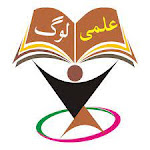9th Grade Chemistry Chapter 1 Introduction To Chemistry Sindh Board MCQs Notes Online Chapter Wise Question Answers. Sindh Boards Chemistry Subject Notes For Exams Preparations Karachi, Jamshoro, Sindh Boards. Chemistry class 9 sindh board notes Unit 1 Introduction To Chemistry Most Repeated Multiple Choice Questions With Answers. Chemistry notes for class IX sindh board karachi Boards.
 |
| 9th Chemistry Sindh Board MCQs Unit 1 |
Q.1: Which one of these was the first to use opium as anesthesia?
- Bu Ali Sina
- Al-Beruni
- Jabir-ibin-Haiyan
- Al RaAzi
D
Q.2: Which gas is studied by J-Black.?
- hydrogen chloride
- sulpherdioxide
- carbondioxide
- carbonmonodioxide
C
Q.3: Scheele discovered -----------.?
- Oxygen
- Fluorine
- Iodine
- chlorine
D
Q.4: Who discovered the periodic arrangement of the elements?
- Faraday
- Gay Lussac
- Mendeleev
- Berzelius
C
Q.5: Which of these branches of chemistry deals with the study of compounds of living organisms.?
- Analytical chemistry
- Environmental chemistry
- Organic chemistry
- Biochemistry
D
Q.6: The study of laws and principles governing the combination of atoms and molecules in chemical reaction is called -----------.?
- Inorganic chemistry
- Industrial chemistry
- Physical chemistry
- Analytical chemistry
C
Q.7: Greek philosopher introduced the concept of elements on earth.?
- Six
- Five
- Four
- Three
C
Q.8: Which one of these scientists is known as Father of Chemistry?
- Bu Ali Sina
- Aristotle
- Al-Beruni
- Jabir bin Haiyan
D
Q.9: Information acquired through careful observation is known as:?
- Prediction
- Theory
- Facts
- None of them
C
Q.10: A theory when repeatedly gives the same results after experimentation and offers correct explanation of the scientific facts, it then becomes?
- Law
- Principle
- Both a and b
- None of them
A
Q.11: Which one of these scientists suggested the symbols of elements?
- Wholer
- Faraday
- Dalton
- Berzelius
D
Q.12: Who studied the process of electrolysis in details?
- Gibbs
- Faraday
- Hess
- Boyle
B
Q.13: What work Lavoisier did?
- Developed the atomic theory
- Suggested the symbols of elements
- Arranged the elements in periodic table
- Oxygen constituted about one fifth of air
D
Q.14: Madam Curie did valuable research in?
- None of them
- Evaporation
- Radioactivity
- Distillation
C
Q.15: Sulphuric acid was discovered by:?
- Bu Ali Sina
- Al-Razi
- Al-Beruni
- Jabir Bin Hayan
D
Q.16: The information obtained from observation is called?
- Law
- Fact
- Theory
- Principle
B
Q.17: A hypothesis is tested by:?
- experiment
- Comparison with other theories
- Comparison with scientific laws
- Observation
A
Q.18: Scientific method comprises ----------- steps.?
- Four
- Three
- Five
- Two
A
Q.19: Who presented the laws of electrolysis?
- J.Berzelius
- Michael Faraday
- Rutherford
- Neil Bohr
A
Q.20: Who discovered nitric acid, hydrochloric acid and sulphuric acid?
- Al-Haitham
- Al-Razi
- Jabir Bin Hayan
- Al-Beruni
C
Q.21: Man started chemical activities by looking at?
- Respiration
- Combustion
- Photosynthesis
- Condensation
B
Q.22: The Muslim period extends from:?
- 600\-1600 A.D
- 200-2000 A.D
- 800-1300 A.D
- 100-1000 A.D
A
Q.23: The compounds of what are used in toothpastes to prevent the decay of teeth?
- Oxides
- Halides
- Fluorides
- Chlorides
C
Q.24: A theory, which gives the same results after repeated experiments become a?
- Law
- Truth
- Fact
- Hypothesis
A
Q.25: Golden script writing with iron pyrites was introduced by?
- Ibne Sena
- Al-Beruni
- Al-Razi
- Jabir Bin Hayan
D
